Plants That Might Make Your Dog Sick
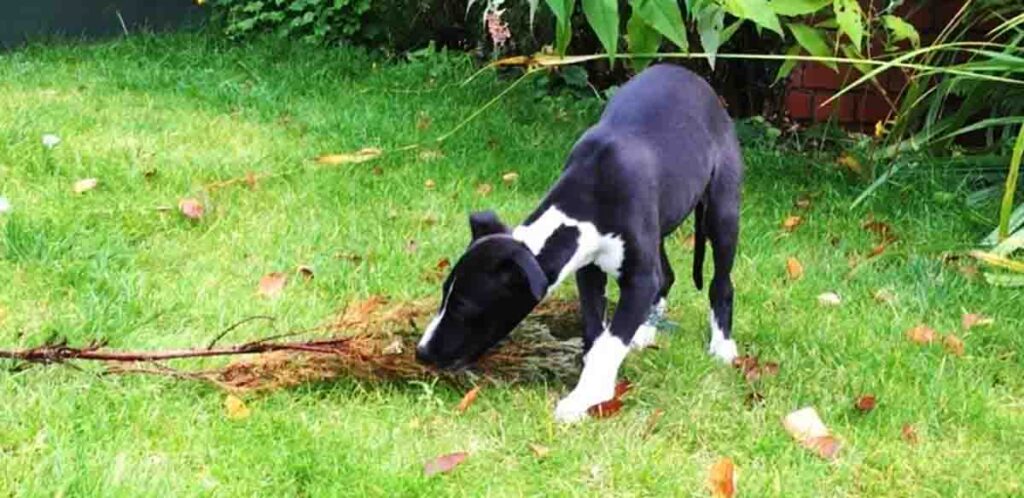
Most dogs love playing in the yard. But it’s not always a benign environment for them. The plants we choose because they’re pretty or productive can trigger allergies, cause skin irritation, or even poison our dogs. If you need to grow a garden that’s dog-friendly, here’s an overview of the types of plants that might make your dog sick – and some of our favorites that won’t!
- Plants that might make your dog sick because they’re poisonous
- Allergy-triggering plants
- Plants that irritate dogs’ skin
- Plants which cause intestinal blockages
- Gardening products that might make dogs sick
- 11 of our favorite dog-friendly plants
Plants that might make your dog sick because they’re poisonous
The most obvious way that plants could make your dog sick is by poisoning them. Lots of plants, like these beautiful chives, contain chemicals that are toxic to dogs. Some irritate the lining of their digestive system, some cause neurological problems, and others disrupt the function of vital organs like their heart, liver or kidneys.
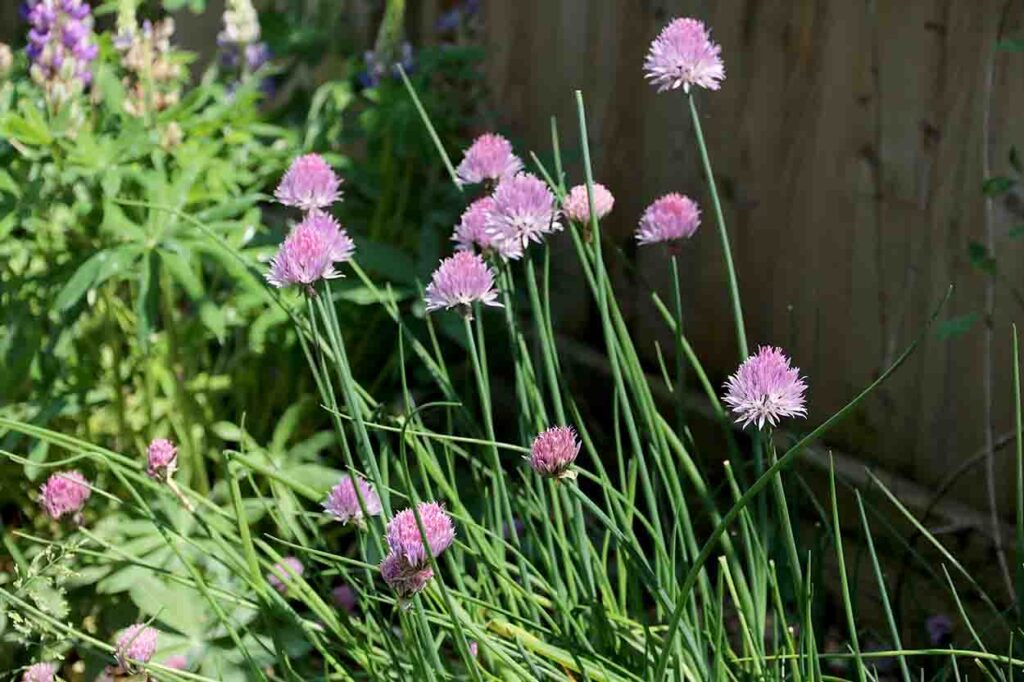
The list of plants that are known to be poisonous to dogs is pretty extensive. In fact one of my pet peeves is online articles with titles like ‘10 of the most toxic plants to dogs’. I’m worried that they make us familiar with some culprits but complacent about planting things we haven’t seen featured on such lists before. So rather than listing some poisonous plants here, I’m going to direct you to the ASPCA’s complete toxic plant list. That’s going to be your comprehensive guide to dog-toxic plants from this day forth!
Contrary to some misconceptions, dogs don’t instinctively recognize when a plant is toxic. Some poisonous plants might have a bitter taste that deters animals from eating them, but a small dog or a puppy doesn’t need to ingest much to suffer side effects. So don’t assume your dog will leave poisonous plants alone – take responsibility for making sure they can’t reach them. If you suspect that your dog has swallowed poisonous plant material, seek immediate veterinary attention. If possible, take a sample of the plant – or several photos of it – with you.
Allergy-triggering plants
Poisonousness might be the first place our mind goes when we think about how plants could make our dog sick. But it’s not the only risk. Just like us, dogs can suffer seasonal allergies to pollen from trees, grasses or flowers. Luckily that’s not a problem for this whippet surrounded by flowering grasses!
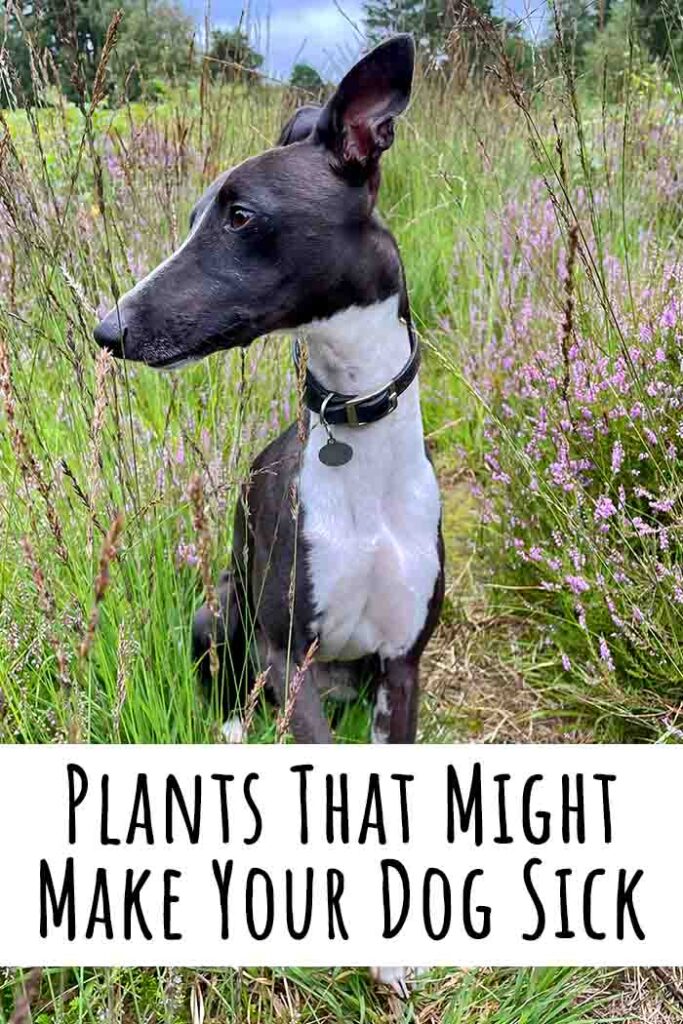
Symptoms of hayfever in dogs include:
- Itchiness and scratching
- Watery eyes
- Red, inflamed patches of skin, especially on their belly or lower legs
- Coughing, sneezing or wheezing
If you spot these symptoms in your pup, ask your veterinarian for advice. If they confirm your pup is suffering seasonal pollen allergies, they may prescribe antihistamines and topical creams to relieve their suffering. Wiping your dog’s coat with a damp microfiber cloth after going outside might also help.
Plants that irritate dogs’ skin
Another category of plants that can make your dog sick are the ones which cause skin irritation, or contact dermatitis. A classic example of this is an unlucky encounter with a patch of stinging nettles. But it can also be caused by getting the sap of some plants onto bare skin. Quite a lot of your dogs’ body is protected by their fur, but their skin is more exposed around their eyes, nose, mouth, paws, belly, inner thigh and armpits. Dogs can get sap on their skin by standing on, sitting on, rolling in, or generally getting tangled in the leaves or stems of plants.
Common plants with irritating sap include poison ivy, poison oak, and the sprawling Euphorbia genus of plants, which includes all spurges, candelabra trees, crown-of-thorns, and African milk trees. If you dog comes into contact with the sap from these plants, seek urgent medical attention. Take lots of photos of the plant from several angles to show your vet, but be vary careful of taking a sample with you – don’t get the sap on your own skin too!
Plants which cause intestinal blockages
Onto the next way plants can harm your dog. And you’d be forgiven at this point to start thinking it’s not worth letting your dog into the yard at all! But let’s just get through these last couple of danger categories and then I’ve got lots of lovely dog-safe plants to excite your with.
It’s pretty well known now that letting your dog chew sticks and branches is not wise. If they swallow chunks or even splinters, those fragments can block or perforate their gut, making your dog seriously sick. If you have trees in your yard that drop branches and twigs in windy weather, watch out for signs of your dog chewing or eating them. Watch out for dogs chewing or swallowing hard nuts like acorns and horse chestnuts too. Both of these are actually poisonous to dogs as well, but their shape carries the added risk of causing bowel obstructions.
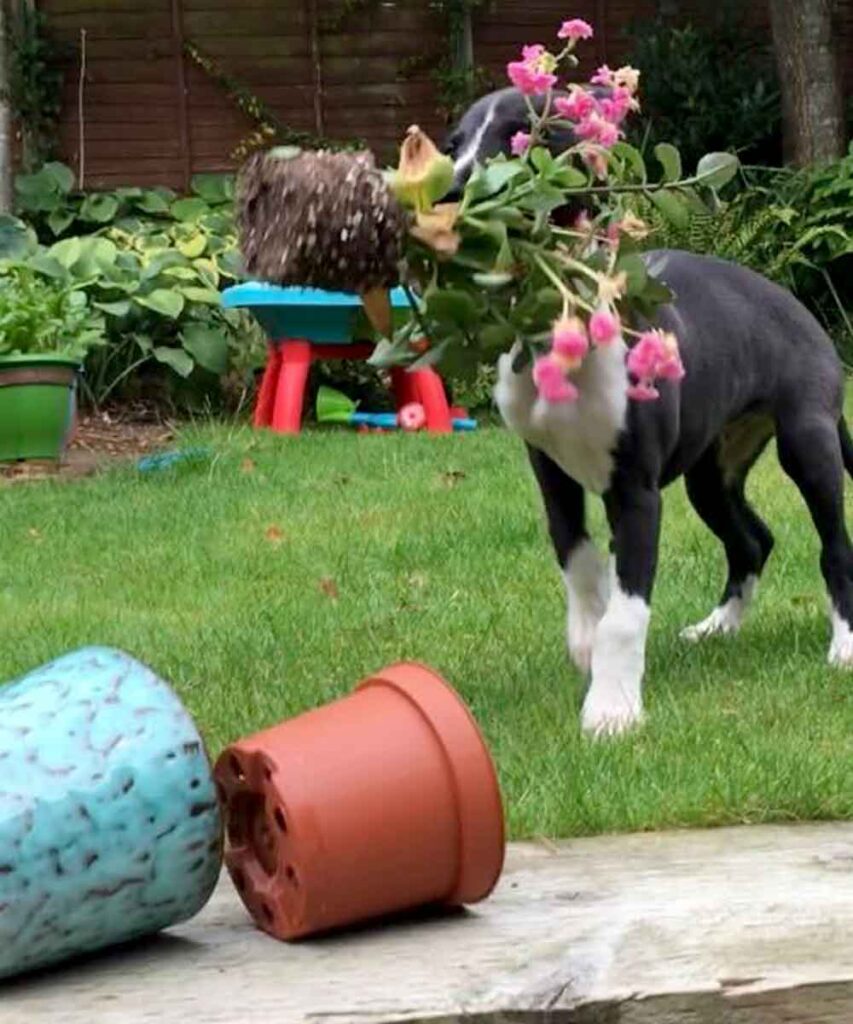
Gardening products on plants that could make dogs sick
Finally, even plants that are otherwise safe and benign to dogs can make them sick if you treat them with chemicals like weedkillers and pesticides. Products like moss killer and fertilizers for your lawn are potential sources of poisons too. Check the packaging carefully before you even bring these items home from the garden center. Pet-safe alternatives exist for most common gardening products, so choose those instead.
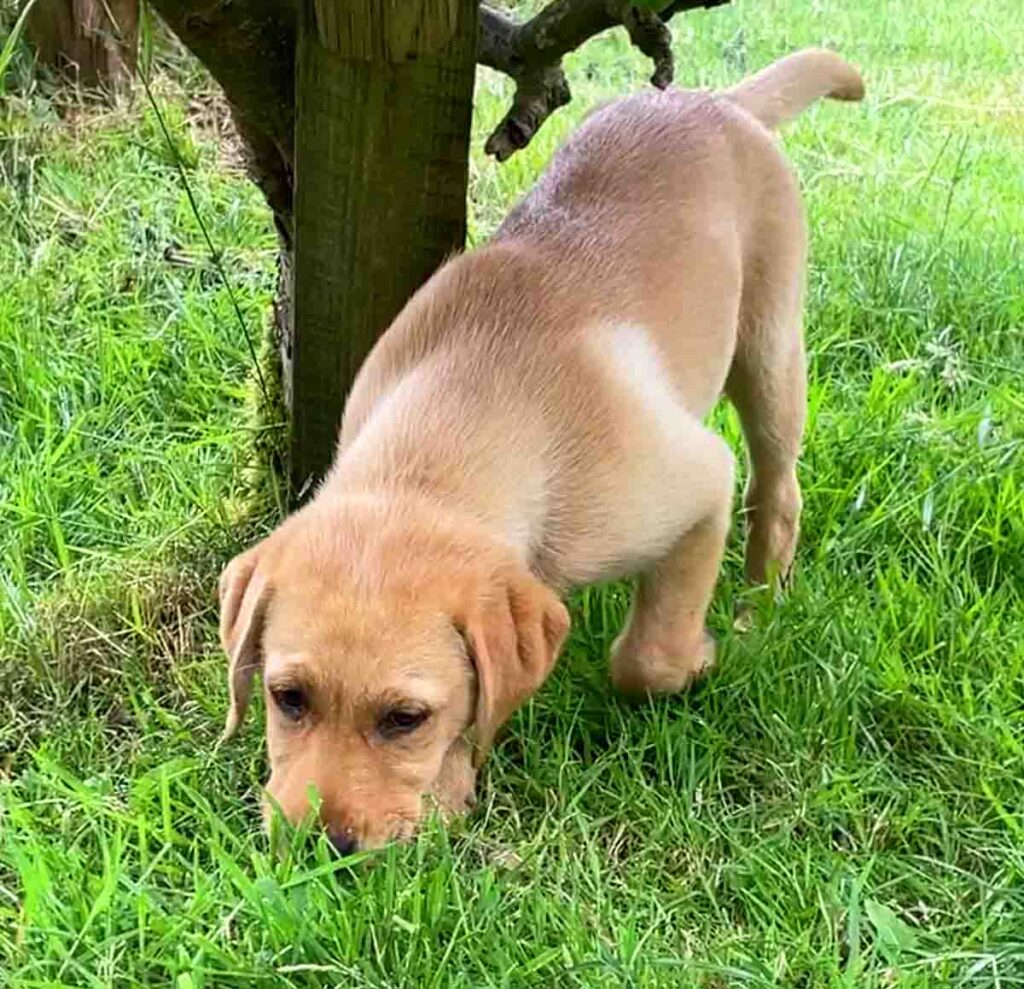
11 of our favorite dog-friendly plants
By now, you’ve probably realized that bringing home a puppy really forces your to examine your planting choices and gardening practices in a new light. But there’s still plenty you can plant that won’t harm your canine pal. The ASPCA’s toxic plant list is accompanied by a safe plant list with hundreds of species to build a beautiful garden from. Here are 11 hard-working, easy to grow favorites:
- Bamboo. Use it for privacy, to muffle neighborhood noise, and to create height and movement in your yard. But grow it in a container to prevent it taking over!
- Begonias. Drought tolerant and widely available from garden centers and superstores, both trailing and climbing begonias are dog-safe.
- Bold sword ferns. Lush, low maintenance and exotic – one of the easiest ways to fill a difficult space. In fact most ferns, with the notable exceptions of asparagus ferns and ball ferns, are dog safe.
- Camellias. A staple evergreen shrub, and one of the first things to flower in spring.
- Gentians, a.k.a. Persian Violets. Hardy, shade-loving little plants with fasciating blue flowers that look like paper balloons before they open.
- Gerberas, a.k.a. African Daisies. Beloved of florists and guaranteed to raise a smile, these brightly colored blooms can be grown as annuals or perennials, depending on how cold your region gets in winter.
- Hibiscus. Originally native to China, Hibiscus shrubs produce flamboyant flowers that can be dried and used to make tea!
- Jasmine. You can’t beat the perfume of jasmine on a summer’s evening. Grow this climber up the sunniest wall or fence in your yard.
- Salvias a.k.a Texas sage. Flowers for months, banquet-level quantities of nectar for friendly pollinating insects, and impervious to being squashed by rogue soccer balls. I flipping love salvias, and so should you.
- Sunflowers. The ultimate growing project for young gardeners. As well as 10ft giants, look for shorter cultivars with white, pink and dark burgundy flowers.
- Thyme. The perfect container plant for a sun baked patio. Look out for citrussy lemon thyme as well as the classic original variety.
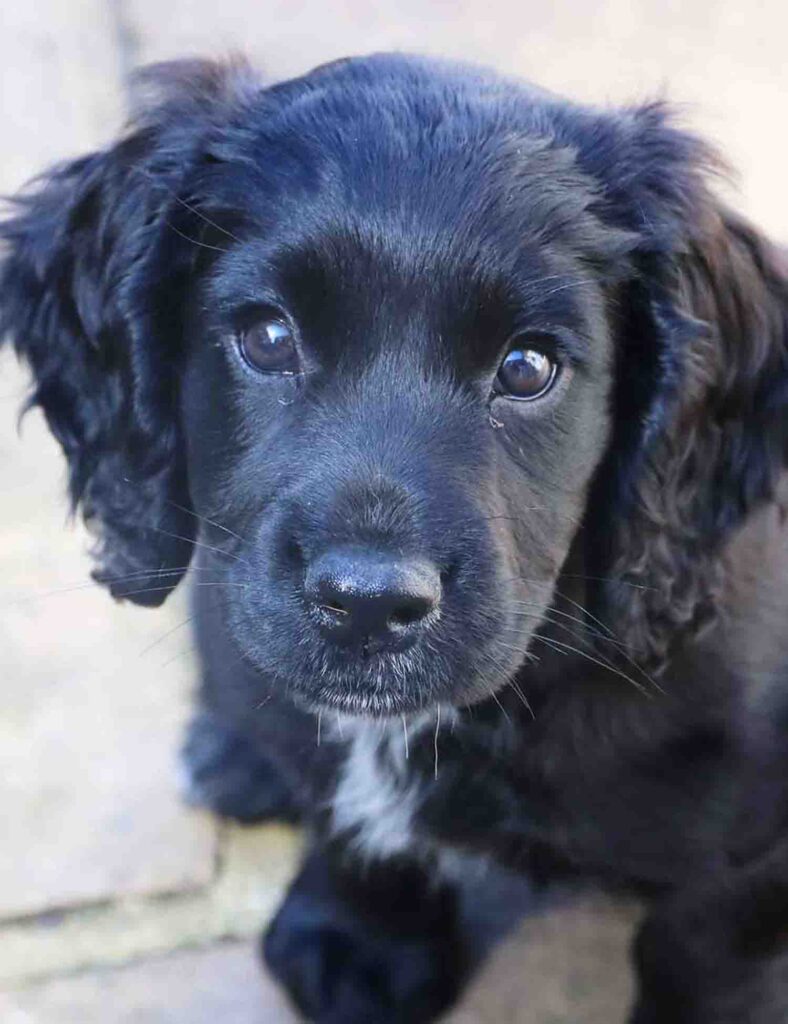
Summary
Some plants can make your dog sick if they swallow them, inhale their pollen, or get the sap on their skin. Usually-benign plants can harm your dog if they have been treated with poisonous chemicals too. When you get a puppy, or move to a new property with your dog, it’s a good idea to check the yard for potentially harmful plants, and either make sure your dog can’t reach them, or replace them with a safer species.
